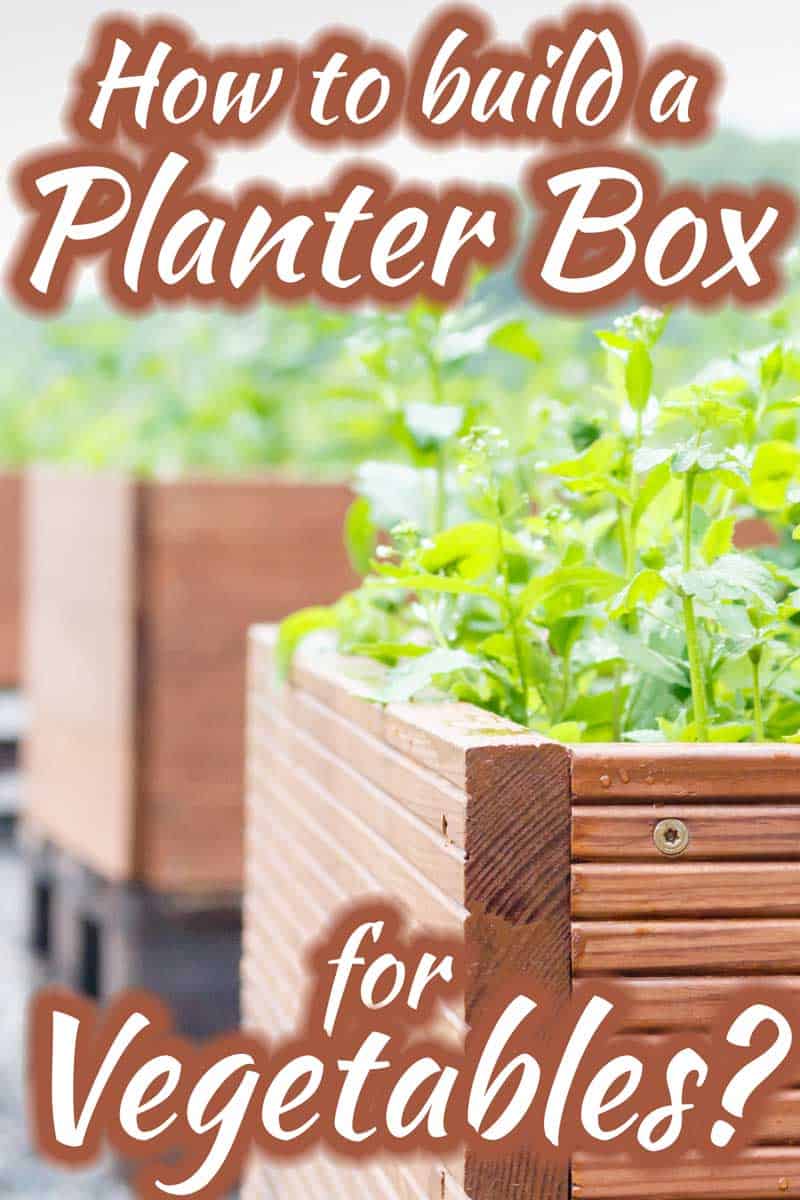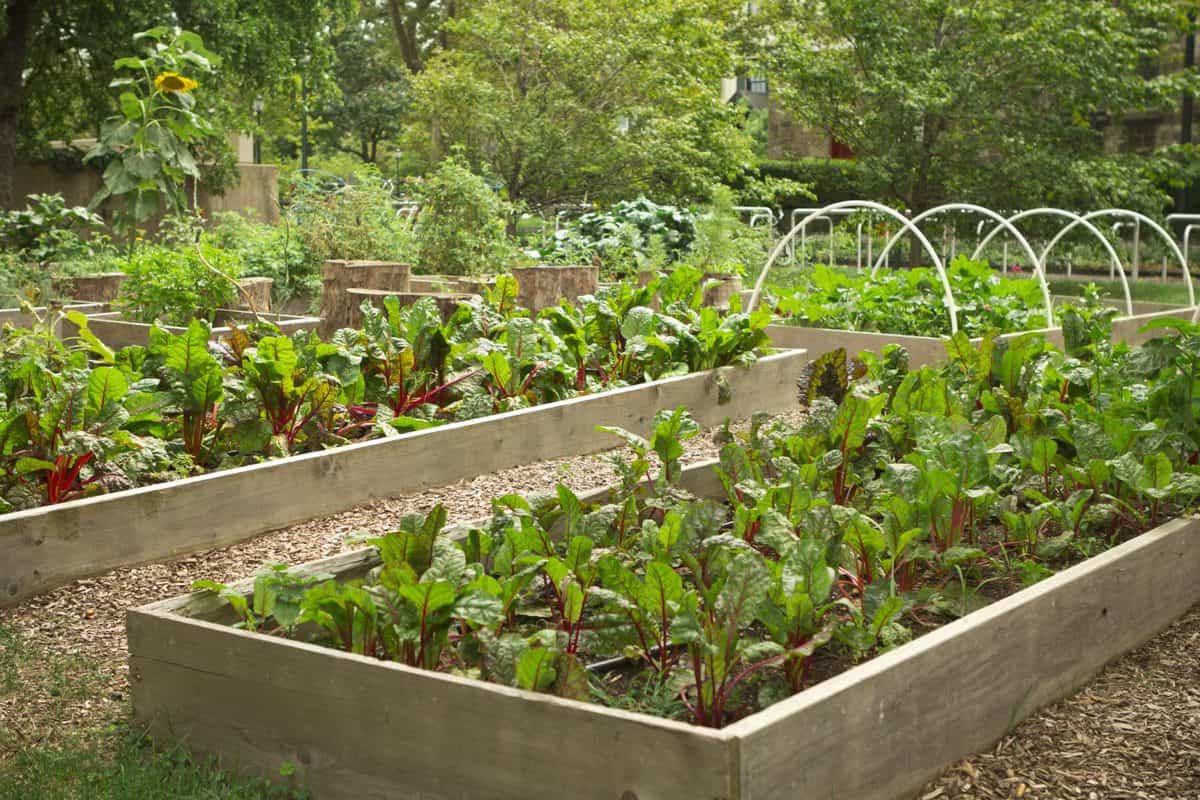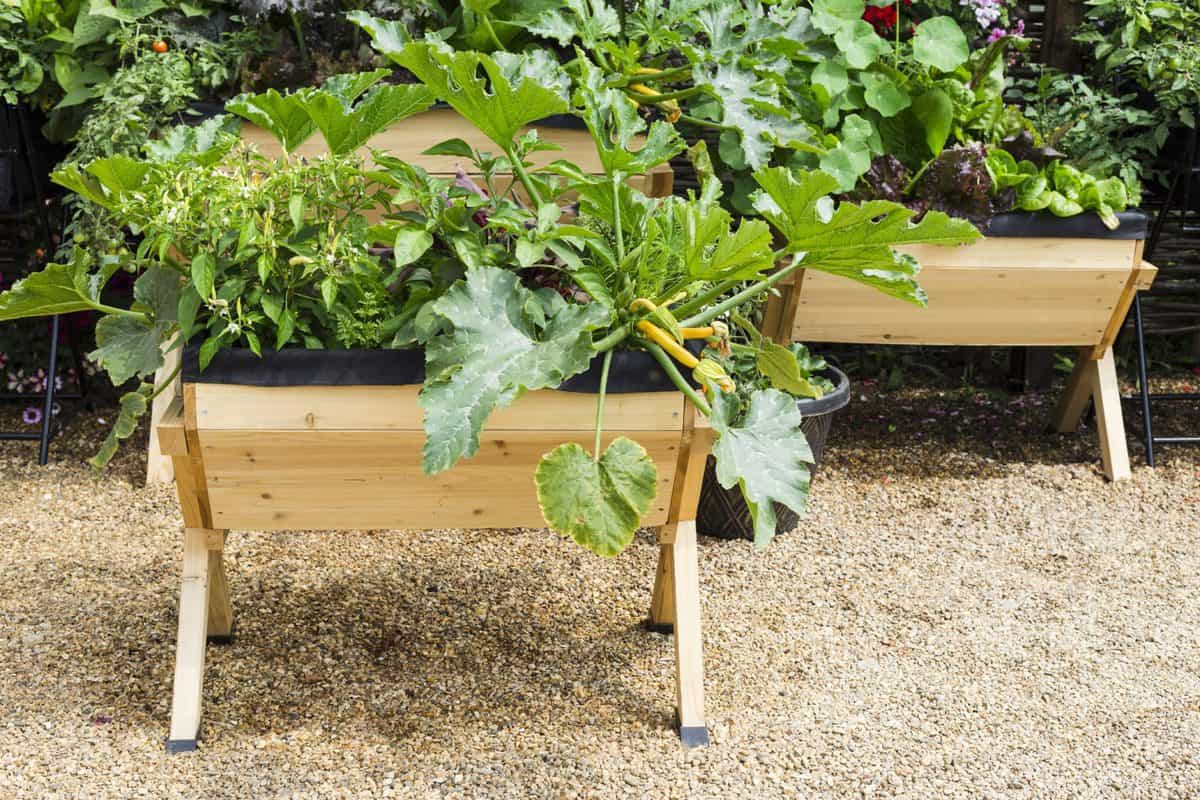
Not all lawns are fertile grounds in which to grow vegetables, so raised planters offer a convenient way for anyone to start their own garden. After all, nothing beats the taste of homegrown produce. Also satisfying? The sense of accomplishment that comes from completing DIY projects. That’s why I’m going to walk you through the process of building a planter box for vegetables.
Building a planter box is a multiple-step process that involves:
- Picking the right location in your yard
- Getting enough 2 x 4 planks of wood to build the planter size you desire
- Assembling the sides and then drilling all of them together
- Digging where you intend to set the planter
- Adding barrier cloth and soil
Of course, there are additional considerations, like which type of wood to use and how much soil to add. Let’s break down each step mentioned to give you a comprehensive plan for building your own planter box.
Picking the Right Spot for Your Planter
Most of the common vegetables grown in planters need at least eight hours of sunlight each day. Therefore, you want to make sure your box receives the appropriate amount of time in the sun.
Additionally, areas of your yard that get swampy after a big rain or sit at a lower altitude tend to be poor choices. You’ll want to be the one to control how much water your vegetables get. Situating your planter box near a hose or another source of water is a good idea.
Getting the Appropriate Amount of Wood
Next, you’ll need to decide on the dimensions of your planter box. Keep in mind that you won’t be able to walk through the plot to get to the middle and, therefore, should choose a size that has all plants at an easy arms-length away.
A four-foot by six-foot plot is a pretty good place to start. Depth may depend on the vegetables you intend to plant, but about ten inches should suffice.
Using the aforementioned dimensions, you can reasonably build the whole thing with a dozen 2 x 4 x 10 posts. However, don’t shy away from getting more wood than you think you need. This will be helpful in the event of measuring or drilling mishaps, which can happen to even the most experienced of craftsmen.
The bottom line is to plan ahead. Do your math before heading to the store.
What Kind of Wood Should You Use for a Planter Box?

You may be wondering if there’s a specific kind of wood to use, particularly since rotting can become an issue. Additionally, you might be concerned about whether treated wood is appropriate for a garden box.
How do you Keep Wooden Planters From Rotting?
To avoid rotting, you can look for naturally water-resistant woods such as cedar or redwood. This is the best, all-natural option. However, since those types of wood can be expensive, most people end up turning to pressure-treated lumber, which lasts longer and is of a comparable price to the most common types of wood used in construction.
Can I use Pressure-treated Wood for A Planter Box?
The fear with pressure treated wood is that the chemicals seep into the soil and affect the quality of the vegetables. Thankfully, the EPA has cleared several kinds of wood treatments for use in planter box gardens, so simply look for wood treated with ACQ (alkaline copper quaternary) and/or copper azole.
For extra cautious gardeners, lining the walls with felt provides a protective barrier between the chemical treated wood and the soil.
Constructing Your Planter Box

Now comes the labor-intensive part: putting it all together. Start by measuring out four corner posts. They should match the height you’ve chosen for the bed walls. You can cut a few more posts of the same length to provide extra support, to be placed in the middle of each of the planter walls.
To make the walls, you’ll have to clamp boards together until you have two six-foot-long and two four-foot-long boards. Make sure they all share the same depth with each other and the corner posts.
Now you’ll want to line up the corner posts flush with the ends of the six-foot walls. Use a drill to create pilot holes and then attach the posts firmly with screws. If you cut posts for additional support, now would be the time to secure those, as well. Make sure to attach them near the center of each wall for maximum utility.
When it comes to putting it all together, make sure the corner posts sit inside the rectangle of your planter. Secure the sides together with screws.
As a final step, you can staple wire mesh to the bottom of your planter. This makes it harder for pesky weeds to get inside but doesn’t deter the helpful insects, like earthworms, from fertilizing your vegetables.
Once that’s complete, you’re finally ready to set up your box planter.
Prepping Your Planter Box Location

Once your box is built, you’ll be just about ready to place it. Before you do, though, you’ll want to use a spade to loosen up the dirt that’ll sit underneath your planter. This allows the roots of your vegetables to grow deep into the ground if they need the extra space.
Install Barrier Cloth and Soil
As additional security against weeds growing in your box, you’ll want to line the whole thing with barrier cloth. The cloth can be placed over the wire mesh at the bottom of the planter and stapled to the sides. Once that’s secure, you’ll want to fill the box with soil. Be sure to leave about two inches of space at the top of the box.
Once your box is prepared and your plants have started to grow, pests like rabbits are enjoying your vegetables more than you, you can look into mesh covers. These allow sunlight to come in unrestricted but keep animals out. As a bonus, if you get a mesh cover with a strong foundation, you can use it to help you secure trellises and the like.
Choosing Veggies
Finally, you’re ready to add seeds to your vegetable planter box. At this point, the world is your oyster, but your choice of veggies might depend on your climate as well as your personal preferences. Some of the most commonly successful box planter vegetables include cherry tomatoes, cucumbers, herbs, and peppers.
One last thing to keep in mind is the growth habits of the various vegetables. For example, you should be sure to pick up stakes for tomato plants to keep them growing straight and out of your other veggie’s business. Additionally, cages can help you contain some of the sprawling plants, like cucumbers.
Remember to water regularly and show your veggies lots of love. Happy harvesting!
